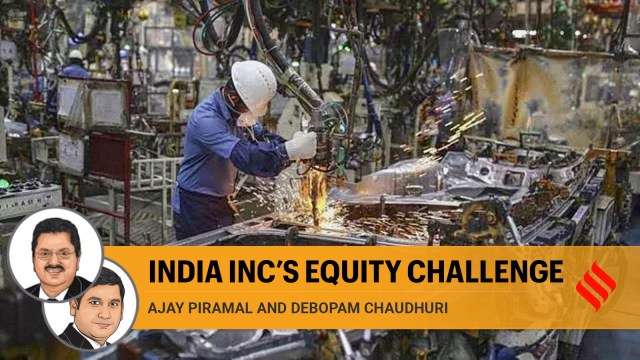
Macroeconomics defines growth as the increase in real national income, while economic development is seen as an improvement in the quality of life and living standards. In a pedagogic universe, both are intertwined in a virtuous cycle of prosperity. But in the real world, leakages often weaken this link, amplifying inequality and preventing the equitable distribution of national wealth.
The last decade marked a turning point for India. Strong political will and strategic economic reforms have propelled the nation into an era of high growth. Once considered among the fragile economies, India is now recognised as a beacon of growth. Massive investments in infrastructure, land and labour reforms, constitutional amendments, tax restructuring, and prudent bankruptcy codes have bolstered business conditions. The current administration has significantly shifted India’s economic narrative, acknowledging wealth creators as vital stakeholders in the nation’s progress — a departure from the socialist mindset post-Independence. With a young, aspirational population and a supportive policy environment, India is poised for a transformative decade. Global institutions such as the IMF, World Bank, and Morgan Stanley predict robust economic growth prospects for the country, spurred by reforms and capital expenditure undertaken over the last decade.
However, there are fissures in India’s growth trajectory that must be addressed urgently. These issues threaten to undermine the vision of a developed India (Viksit Bharat) by 2047, where per capita income must rise from $2,700 to $15,000. Persistent inequalities remain a significant obstacle to achieving India’s economic potential.
A stark illustration of this inequality can be seen geographically. A hypothetical line from New Delhi to Hyderabad on India’s map separates the nation into two distinct realities. On one side lie high-income states like Gujarat, Maharashtra, Karnataka, and Tamil Nadu, driving India’s global economic presence. On the other, states such as Bihar, Jharkhand, Chhattisgarh, Odisha, and Assam struggle with slow growth and systemic underdevelopment. Official estimates on states’ GDP suggests that the per capita income of the rest of India is 2.2 times higher than the average of these five states. What is worrying is this gap seems to have increased over time, from 1.6 times in 2011-12 to 2.2 times by 2021-22.
Low-income levels have manifested through other economic indicators in these regions. For example, while these five states account for 26 per cent of India’s workforce, owing to low productivity, they contribute only 11 per cent of GDP. Their maternal mortality rate is as high as 165, compared to the national average of 75, and the SDG target of 70. The poverty rate stands at 23 per cent, more than double the national average of 10 per cent, and far from the SDG target of 0.
Similarly, conditions in the 112 aspirational districts, concentrated largely in these states, remain grim. These districts have Human Development Index scores comparable to some of the weakest sub-Saharan nations. Through the Piramal Foundation’s work, several stark realities of these regions have come to light. One, in Assam, during the monsoons, areas known as “Chars” turn into isolated islands, cutting off access to schools and public services. Children endure three to four hour journeys to school, crops are destroyed, and poverty becomes acute.
Two, in the Bahraich district of Uttar Pradesh, children risk leopard attacks on their way to school. Three, in Nagaland’s Kiphire district, connectivity is so limited that residents must travel eight to nine hours through treacherous terrain to reach the nearest hospital.
Despite these hurdles, India has made notable progress. Government efforts have significantly reduced multidimensional poverty — from 29.2 per cent in 2013-14 to 11.3 per cent in 2022-23 — lifting 250 million people out of poverty. Approximately Rs 48 lakh crore is spent jointly by central and state governments annually on social sector schemes, addressing health, sanitation, education, and transport.
Yet, the role of the private sector in addressing these inequities remains limited. A stark disparity in Corporate Social Responsibility (CSR) funding highlights this neglect. For instance, Pune, with a population of under one crore, receives Rs 257 crore annually in CSR funds, translating to Rs 375 per capita. In contrast, the 112 aspirational districts, home to 25 crore people, receive only Rs 472 crore, or Rs 19 per capita. This glaring inequity underscores the urgent need for corporations to direct their CSR initiatives toward the underserved regions.
We should see India as a congregation of three distinct population segments. The affluent segment of about 5.6 crore people, the mid-income and aspiring segment of 110 crore people and the economically weak segment of 20 crore people. There must be focused intervention by both private and public stakeholders to ensure equitable development opportunities are available to all these segments. This can be met by a combination of higher participation of corporate players through their CSR channels in the poorest Indian districts and overhauling government mid-levels systems for better delivery of public services. Unless all of India develops equally and quickly, we remain exposed to the risk of under-utilising our demographic dividend and the unique economic opportunity of the China plus strategy.
Piramal is chairman and Chaudhuri is chief economist, Piramal Group